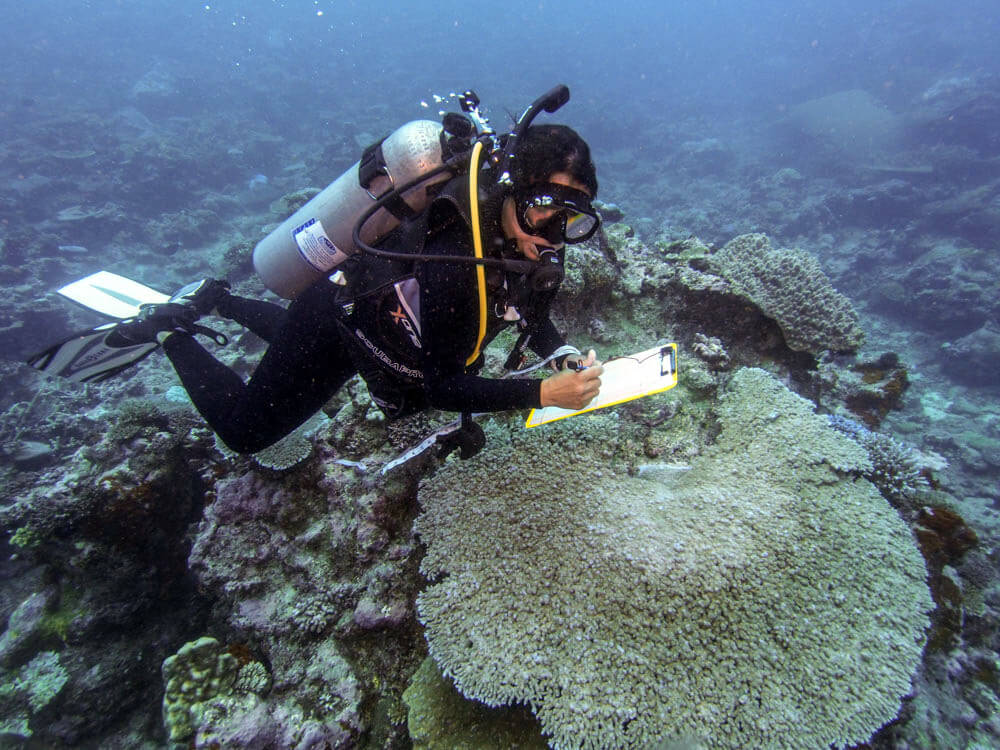Before Cyclone Winston hit Fiji, we were following closely the El Niño cycle, the drought and some reports of coral bleaching from the Suncoast dive operators.

Tropical Cyclone Winston not only altered Fiji’s landscapes and communities along its path, it also caused significant damage to coral reefs, according to Wildlife Conservation Society Fiji Country Program Director, Dr Sangeeta Mangubhai following her assessment of coral reefs in the Vatu-i-Ra passage.
Her findings also highlighted that coral reefs in the seascape have been damaged by the Cyclone and under the additional stress of temperature-induced coral bleaching.
 The local newspaper, the Fiji Times, ran a number of stories about fish kills and there was a lot of speculation about whether this was caused by the elevated sea surface temperatures we were experiencing across Fiji. Temperatures on inner reef flats along the Coral Coast recorded temperatures as high as 35°C.
The local newspaper, the Fiji Times, ran a number of stories about fish kills and there was a lot of speculation about whether this was caused by the elevated sea surface temperatures we were experiencing across Fiji. Temperatures on inner reef flats along the Coral Coast recorded temperatures as high as 35°C.
I have been spending part of each dive collecting data on the scale and intensity of bleaching across a range of habitats including fringing patch and lagoonal reefs, channels and bommies, using a rapid assessment technique developed by Dr. Tim McClanahan and Dr. Emily Darling from the Wildlife Conservation Society.
Over the last four days, I have documented mild levels of bleaching, with common coral genera like Acropora, Pocillopora, Porites (massive forms), Montipora and Pavona mostly affected. By mild, I mean that corals are either iridescent or slightly pale, rather than fully white (i.e. bleached).
The tissue on these corals is still very much alive. A few very large colonies of Porites and Pavona are severely bleached in the shallow lagoon at Gau Island, but again still alive.
For most part the bleaching is patchy and affecting corals living at 5-15m depth. Water temperatures in the Vatu-i-Ra Seascape have dropped by about 2°C since the cyclone to 27°C.
If these cooler water conditions continue, we can expect that most pale or bleached coral colonies will return to normal over the upcoming weeks.
It is going to be even more important that we look after our reef resources over the next 12 months, to give our reefs the best chance of recovery, so that they can continue to feed and sustain us here in Fiji.
How well we care for our reefs will determine how well they recovery from both climate-induced temperature stress and the mechanical damage caused by cyclone Winston.
Vatu-i-Ra-Seascape_Fact-Sheet- pdf (download 1MB)
About the Author: Dr. Sangeeta Mangubhai
Dr. Sangeeta Mangubhai, a self-professed “Conservation Diva”, is the Director of Wildlife Conservation Society’s Fiji Program. She enjoys mentoring the next generation of conservation leaders and scientists, and grabs any opportunity to dive and experience the Vatu-i-Ra Seascape.
